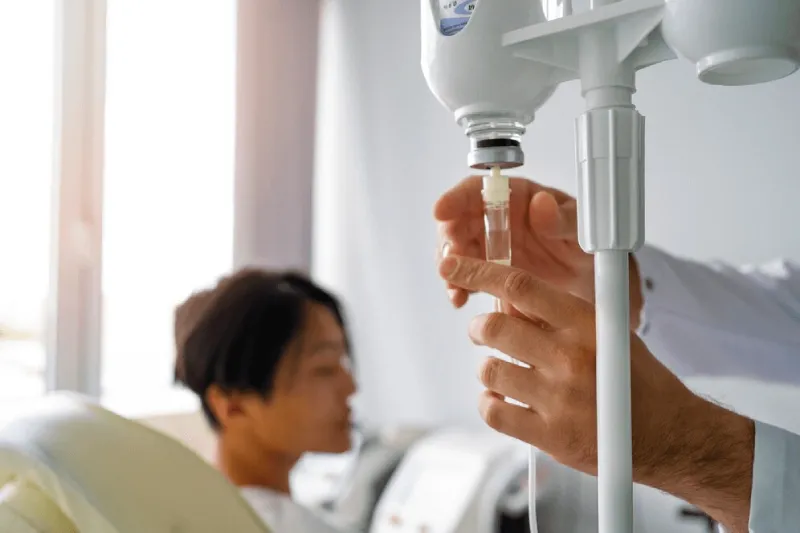
Vitamin IV therapy pros and cons present a comprehensive examination of this innovative supplementation method. Delving into its multifaceted aspects, this analysis encapsulates the advantages and considerations surrounding IV therapy. Highlighting enhanced bioavailability, tailored nutrient delivery, and rapid hydration benefits, it explores the method’s efficacy.
However, amidst the immediacy and potential anti-aging benefits lie risks of overdosing, short-term focus, and quality discrepancies among providers. This article aims to offer a balanced perspective, empowering readers to navigate the nuanced landscape of vitamin IV therapy pros and cons for informed health decisions.
Vitamin IV Therapy Pros
Vitamin IV therapy pros and cons offer a comprehensive view of the benefits and considerations regarding this innovative supplementation method. IV therapy boasts enhanced bioavailability, customized nutrient delivery, and swift hydration benefits. Here are the facets to consider for a balanced perspective.
Enhanced Bioavailability:
IV therapy’s direct administration into the bloodstream circumvents the digestive process, ensuring higher absorption rates. This attribute is especially beneficial for individuals grappling with gut-related issues that impede efficient nutrient absorption. By bypassing potential barriers in the digestive system, IV therapy guarantees a more reliable and direct route for essential nutrients to enter the bloodstream and be readily utilized by the body.
Customization and Efficiency:
Tailoring IV drips to suit individual nutritional requirements streamlines supplement intake. The method’s ability to combine multiple supplements into a singular dose enhances convenience while ensuring precise and personalized nutrient delivery. This bespoke approach optimizes efficiency, providing individuals with a comprehensive and targeted supplementation regimen that addresses specific deficiencies or needs effectively.
Hydration and Electrolyte Balance:
IV drips frequently incorporate a liquid salt solution, facilitating rapid hydration and swift restoration of electrolyte levels. This feature proves invaluable during instances of dehydration or electrolyte imbalances, promptly replenishing the body’s fluid levels and re-establishing the crucial balance of electrolytes for optimal physiological function.
Rapid Action:
IV therapy’s immediacy is a benefit for addressing short-term health concerns or urgent needs. Its quick response can swiftly mitigate symptoms, offering an expedited energy boost or bolstering the immune system’s response. This rapid intervention provides effective support in critical situations, ensuring timely relief and support for immediate health challenges.
Anti-Aging Benefits:
The inclusion of compounds like glutathione in IV drips serves as potent antioxidants. By neutralizing free radicals, these antioxidants potentially contribute to maintaining youthful skin. The active combat against oxidative stress and free radical damage may help preserve skin elasticity and reduce the visible signs of aging, promoting a healthier and more vibrant complexion.
Vitamin IV Therapy Cons
Considering both vitamin IV therapy pros and cons can help shed light on its advantages and potential drawbacks. While IV therapy offers immediate benefits, risks like potential overdosing, short-term focus, quality variations, adverse reactions, and the placebo effect warrant careful consideration. Here are the crucial aspects to weigh for an informed decision.
Potential Risks:
Administering excessive dosages through IV therapy poses hazards, emphasizing the critical need to comprehend individual biochemistry. Understanding an individual’s specific nutrient requirements is vital to prevent adverse effects. Oversupplying nutrients, even those considered beneficial, can lead to imbalances or toxicity, underscoring the necessity for personalized dosing to ensure safe and effective treatment.
Short-Term Solution:
While IV therapy provides immediate benefits, it’s not a substitute for a comprehensive health strategy. Relying solely on IV supplements disregards the significance of maintaining healthy eating habits and embracing lifestyle changes essential for long-term well-being. Integrating balanced nutrition and healthy practices remains fundamental for sustainable health improvements beyond the immediate effects of IV therapy.
Quality Variations:
Discrepancies in care standards among IV therapy providers necessitate careful selection. Opting for reputable and reliable providers ensures the safety and efficacy of IV treatments. Choosing accredited facilities with experienced professionals reduces the risk of complications and ensures the delivery of high-quality and safe IV therapy.
Possible Adverse Reactions:
Individuals with heightened sensitivity or those obtaining IV therapy from less reputable sources face elevated risks of adverse reactions or complications. Quality control, sterility, and the expertise of the administering personnel significantly impact the safety of IV treatments, highlighting the importance of selecting trustworthy sources for these procedures.
Placebo Effect Concerns:
Recognizing the potential impact of the placebo effect in IV therapy highlights the necessity for a thorough evaluation. In one study on fibromyalgia patients, where half received IV vitamin solutions and the rest received none, both groups displayed improvement. This outcome underscores the significance of distinguishing between perceived and actual benefits, urging a meticulous examination of IV therapy’s true physiological efficacy apart from subjective perceptions to ascertain its genuine healing potential.
Frequently Asked Question

Q1: How often should you take vitamin IV?
The frequency of vitamin IV therapy varies based on individual needs and health conditions. Generally, sessions are spaced from weekly to monthly, with some opting for every other week. Consult a healthcare professional to determine the ideal frequency tailored to your specific health goals.
Q2: What happens to your body after an IV?
After an IV, the body rapidly absorbs nutrients, fluids, and medications directly into the bloodstream. Immediate effects often include improved hydration, faster wound healing, cell repair, electrolyte balance, and relief from symptoms like pain or nausea, depending on the infusion contents.
Q3: How long do the benefits of IV vitamins last?
The duration of IV vitamin benefits varies by individual and the specific nutrients administered. While IV fluids stay in the body for a few hours, vitamins and minerals may last days to weeks, depending on the body’s needs and the type of infusion received.
Q4: Why is IV better than oral vitamins?
IV therapy provides direct and immediate nutrient absorption into the bloodstream, bypassing the digestive system. This leads to quicker effects compared to oral vitamins, which must navigate the digestive tract. IVs offer faster hydration, quicker symptom relief, and efficient nutrient delivery, which is especially beneficial for those with absorption issues.
Conclusion
Understanding vitamin IV therapy’s pros and cons is pivotal for informed health choices. While acknowledging its rapid benefits like enhanced bioavailability and hydration, caution is essential regarding potential risks such as overdosing and quality variations. Striking a balance between immediate advantages and long-term health strategies is vital when considering vitamin IV therapy pros and cons for holistic well-being.
At Sunshine Infusion, we specialize in IV vitamin therapy tailored to your needs. Experience the benefits of efficient nutrient delivery and rapid hydration. Contact us today for personalized wellness solutions!




